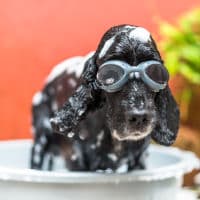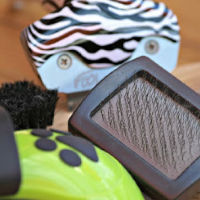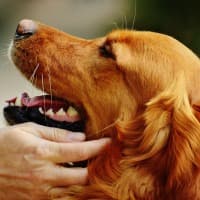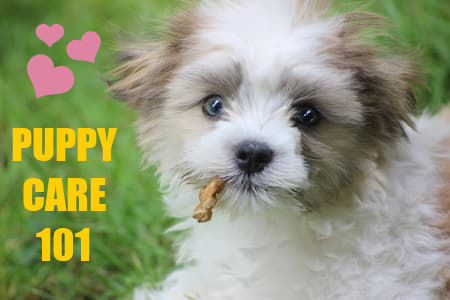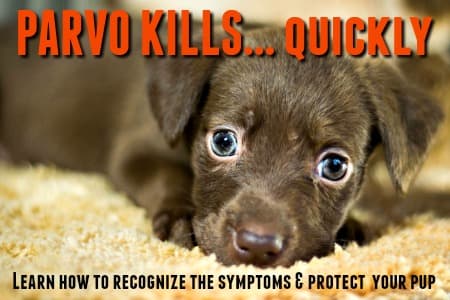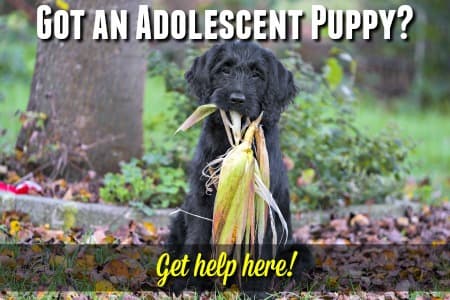FYI: If you buy something through a link on this site I may earn a commission - at NO extra cost to you.
How To Groom A Dog At Home
Figuring out how to groom a dog isn't rocket science, but there are some basic principles that will make your at-home dog grooming sessions easier, for everyone.
Life is busy, and keeping Fido neat and tidy may not be at the top of your 'to-do' list, but a daily 'tidy up' session is a good idea for lots of reasons.
- Reduces shedding
- Keeps you aware of any coat/skin issues that may arise
- Gets your puppy/dog used to being handled and touched
- Gives you a chance to spot any early signs of parasites
Step-by-Step DIY Dog Grooming
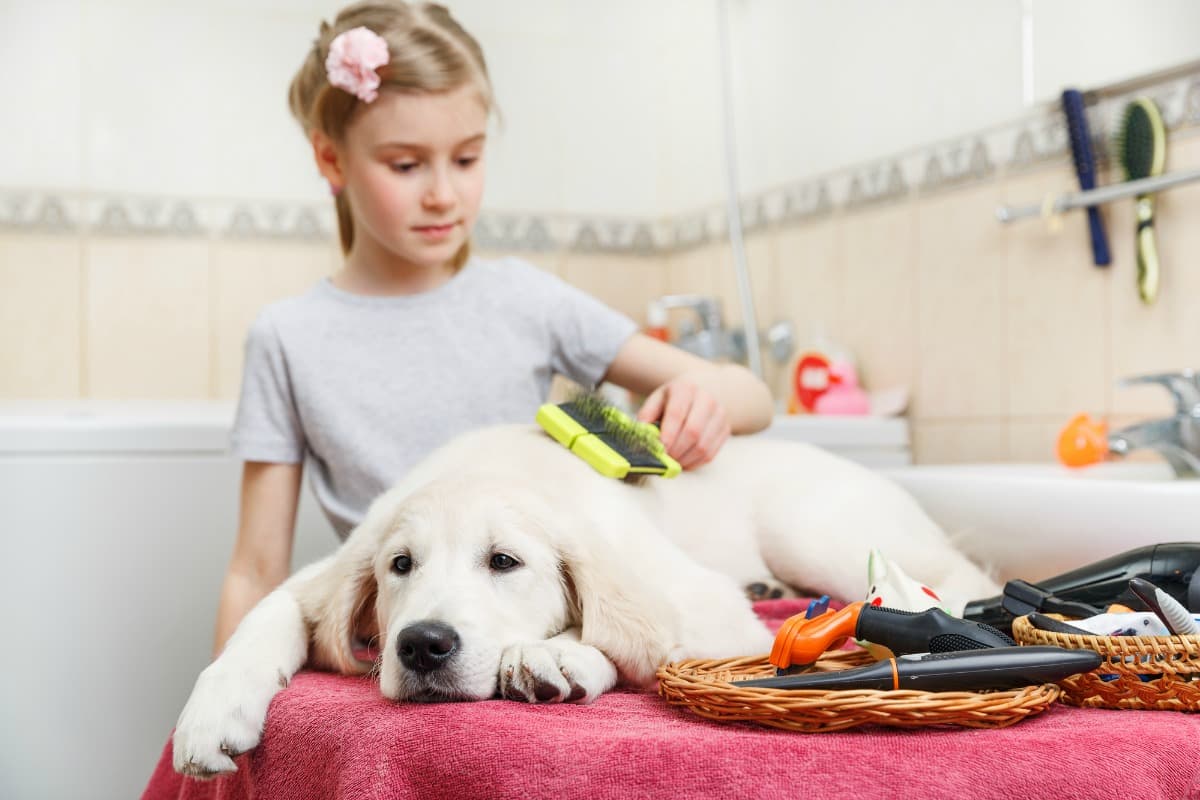
Keep each grooming session short to begin with, gradually increasing them as Fido gets used to the whole thing.
Start with an all-over exam
It's good to get into the habit of doing a quick physical check this way once a week or so. Run your hands over Fido's whole body and feel for lumps, bumps, scratches etc. Also look for fleas and ticks. Check each paw for cuts or thorns.
look in your dog's ears
They should be clean and odor free. If they look red, hot or inflamed, if there's discharge or they look dirty/gritty or smell bad those are all signs of possible dog ear problems.
If you're concerned it's always a good idea to have your veterinarian take a closer look.
Look at his eyes
Your dog's eyes should be clear and bright with no discharge. A cloudy/white appearance can mean infection or injury.
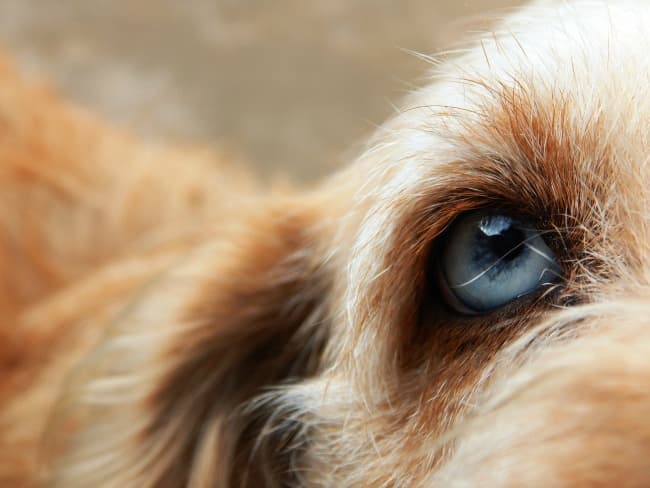
Dog eye problems can get serious pretty quickly and there's always the potential that they could damage his vision so have issues evaluated by your veterinarian. Tear staining can be treated with Angel Eyes and/or special cleaning products.
examine teeth & gums
Look for broken teeth or cut gums. Sometimes a puppy can get a bit vigorous in his chewing and hurt his mouth and older dogs can have decayed or brittle teeth.
Regular chewing on toys and other specialties such as 'Greenies' should keep his gums and teeth in good shape, but it's also a good idea to check regularly for plaque build up.
Make a habit of doing this once a month or so because good dental care is very important, and get into the habit of brushing his teeth regularly.
See Brushing Puppy Teeth or Dog Teeth Cleaning 101 to learn how to get this important task done right!
A really quick and easy way to help keep your puppy's teeth white, his gums healthy and his breath sweet is to add EvoraPet Oral Care Probiotics for Dogs and Cats to his food daily.
Or try adding Oxyfresh dental care solution to his water to fight plaque/tartar build up and freshen his breath. It's odorless and tasteless so Fido won't ever know it's there, helping to keep his mouth healthy.
brush & comb his fur
Unless he's shedding very heavily, has a very long, thick coat or is a show dog, you'll find that brushing Fido once a day is enough.
During the times when your dog is losing lots of his hair (shedding) is a problem, use a shedding comb or blade to make sure the job gets done properly.
Check out this page for more info. on how to handle this... About Dog Shedding.
If you have a full coated or long coated puppy, don't forget to brush the hair on his chest and tummy, it can get matted quite easily. The same for the hair on his back legs and under the tail.
Using dog grooming tools
If you have a puppy you'll only need pretty basic tools to start with, as your little one grows you can add to your collection if you want to.
For general, everyday use a wide-tooth metal comb does a great job on short to medium coated breeds, a bristle brush or one with rounded metal 'pins' can also work well.
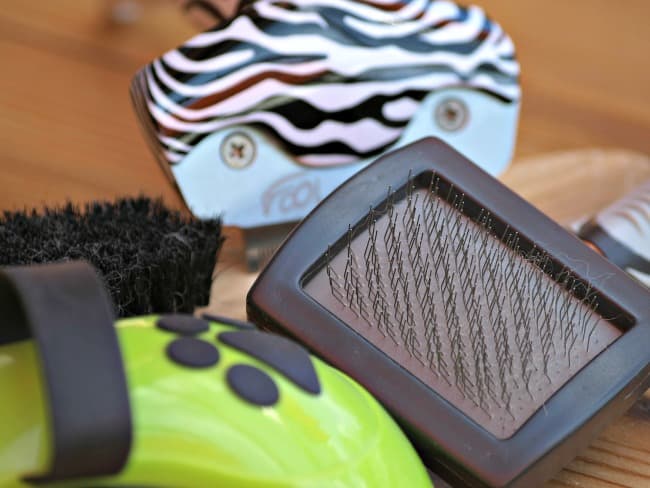
Wire toothed 'slicker' brushes and Grooming Rakes are good for removing dead hair, but they can be sharp.
If his coat is smooth, thin or if he's a little on the slender side, be careful as these types of tools can hurt him by scratching his sensitive skin.
You want your dog to like (although you may have to settle for tolerate) being groomed, so anything that causes him discomfort isn't a good idea. You don't want him to decide that the brush in your hand is Public Enemy #1!
If your dog is small enough to stand on a fairly small, low table (such as a coffee table), you can put a non-slip mat on the table and groom him while he's standing on it. He'll feel a little more secure up there and that translates into less squirming.
To make the job even easier, put the table in front of a smooth, washable surface (such as the refrigerator or washing machine) and spread a little peanut butter on it. If you'd like the less messy option use the Aquapaw Slow Treat Dispensing Suction Mat or the Happydog Grooming Distraction Pad for the peanut butter.
Your furbaby will be so busy licking off the peanut butter that he will forget all about wriggling! If your puppy/dog is too large for a table, just stand him in front of the 'fridge - it works the same way.
Check out my full guide to dog grooming aids HERE. It has loads of tips and advice to help you find the best tools for the job... and use them correctly.
what about bath time?
There will be times when your puppy needs more than just a brushing. These times call for a bath!
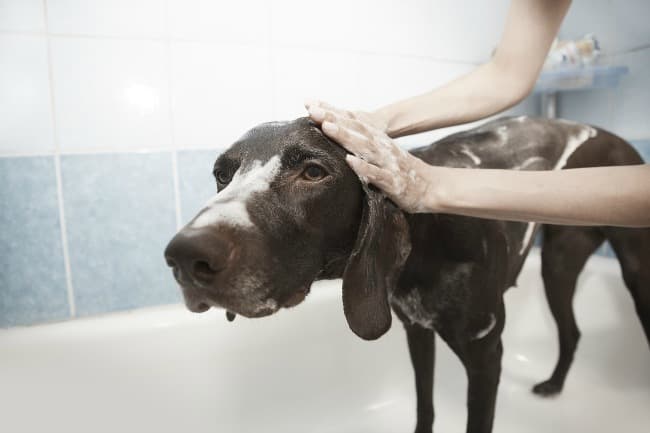
How often you'll need to initiate tubby time depends on a lot of things, including whether Fido spends a lot of time outside; is long or short-haired; loves to swim in the lake; or insists on splashing through EVERY puddle on your daily walk.
Bathtime may be necessary but it doesn't need to be a chore. See my Bathing-A-Puppy page for a step by step guide that will have your puppy clean and sweet smelling in no time.
Here are a couple of great books about DIY dog grooming which can answer all your questions and help you in a lot of different ways. The 'For Dummies' books are one my favorites and I have several for different topics (mostly dog related!). Very easy to read, straightforward tips and a sense of humor that appeals to mine. The second book is an excellent source of professional tips and advice as well, step-by-step guides, loads of photos and great resource if your dog's coat needs trimming/cutting as well as simply grooming...
dog nail care
It's important to keep Fido's nails short to prevent them splitting or breaking.
Fido probably won't jump for joy when you try to cut his nails but it's a process he needs to get used to and accept as a regular part of his grooming routine. If your dog resists your attempts to cut his nails at home and won't stay still then I'd recommend having your veterinarian or a groomer do it for him.
Too-long nails can cause pain and even end up with paw-pad damage or infections so either trim them at home or have them done professionally on a regular basis.
See our Cutting Puppy Nails page for lots of tips on how to make this important task easier for both you both.
Hair Loss? Patchy Coat, or Irritated Skin?
As I mentioned at the beginning of this page, when you're grooming your pup/dog it's the perfect time to check him for potential problems such as lumps, bumps, injuries, parasites and more.
Patchy hair loss, bald spots, red irritated/inflamed skin or a rash can be signs of parasitic problems such as Mange or fungal infections such as Ringworm.
If you notice any of these, have your vet take a look at your pup so that if there is a problem you can get it diagnosed and treated quickly. This is always less expensive and less complicated than taking a 'wait-and-see' approach and then being forced to treat a condition that is already advanced!
dog grooming as a business
If you enjoy grooming your own dog and are interested in becoming a professional dog groomer there are a number of ways you can do this.
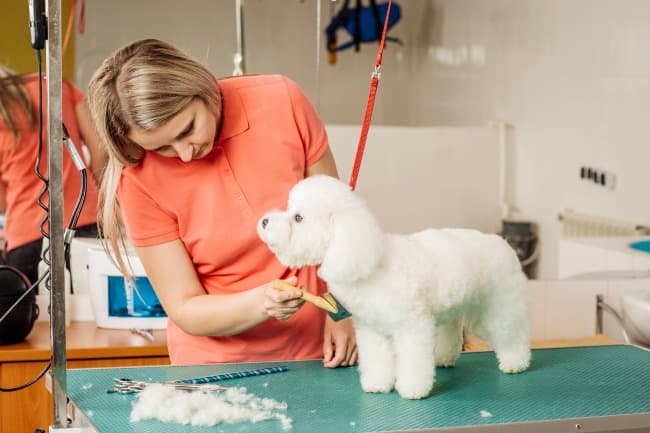
Dog grooming classes and schools exist across the US, and you can also take online courses. There are some excellent books that you can use to teach yourself. You don't need a license to become a dog groomer but obviously you do need the right knowledge and experience. Check out this national list of dog grooming schools plus important information and tips on finding the right class for you. Online grooming instruction is available through the Animal Behavior College as well as many other establishments.
Both these books are highly recommended for anyone who is studying to become, or already is, a dog groomer. So. Much. Information.
you might also like...
- Home
- How to Groom a Dog
FTC Disclosure: Some pages on this site contain affiliate links. I may earn on qualified purchases.




